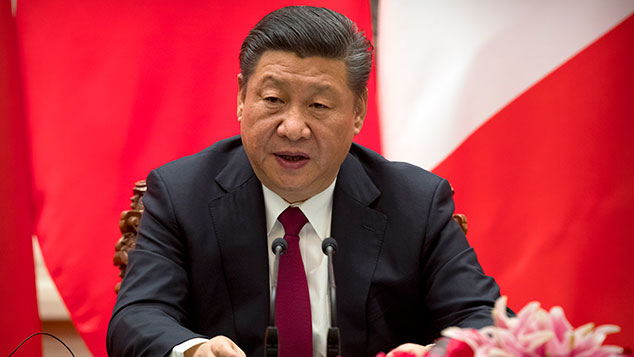
Over the past year or so, there has been no overall cut to Japanese domestic productive capacity – except in some thoroughly outdated sectors and a few in which Japan has no hope of ever regaining a competitive advantage, such as coal or textiles. (You may think this one of the most boring sentences I have ever offered you, but bear with me.)
This is one of the best clues you will find as to what might happen next in the global economy. For years now, the world has suffered from an overcapacity and disinflationary problem: too many factories produce too much stuff, pushing prices too far down.
We see the consequences of this all around in low wage-growth and endless quantitative easing. There is a general assumption that this hasn’t changed and is not changing, so there is no risk of inflation rising from its clearly cooling ashes, regardless of how loose monetary policy is and for how long. This assumption might be completely wrong. Look at how the world ended up with too much capacity in the first place. It was (as is almost everything) all about China.
The accession of China’s huge economy into the World Trade Organisation in 2001, the priorities of its leaders over the past couple of decades (growth, growth, growth) and the particularly huge dose of stimulus chucked into the economy in 2009 added massive, cheap capacity into the global system and changed everything for everyone else.
Who wants expensive stuff made in Michigan or Aichi Prefecture when you can have cheap stuff made in China instead? Quite. But China’s changing. For years, party officials have been incentivised to force growth out of their regions, regardless of the effects on prices, global macroeconomics or, for that matter, pollution.
In the party conference in October, Xi Jinping shifted emphasis. Instead of focusing on growth, he talked of “three tough battles”. These are against preventing major risks (mainly financial – the new target is to be “further deleveraging”); poverty (Xi fancies a “moderately prosperous society” in all respects); and pollution (he wants to see the sky blue again).
The result has been pretty instant. Almost as the delegates headed home, say the analysts at Gavekal, prices of natural gas (a “clean fuel”) doubled; steel output stalled; and cement sector output actually fell even as demand for it and hence prices rose. China doesn’t seem to be adding new capacity to the global economy in the way that it was and that should mean it isn’t exporting deflation to the rest of the world any more either.
That is a dynamic that is arguably beginning to show up everywhere else. The slack is disappearing. There is no spare capacity left in Japan (or you would see new cuts to it). Industrial production in the US hit a record high in December, despite the US being too busy with buybacks and financial engineering over the past decade to build new capacity. Manufacturing output in the UK is at its highest in ten years.
This could all lead us to several interesting conclusions. The first, highlighted by Gavekal, is that it is an explanation for the way stockmarkets in countries that have been hampered with too much productive space in the past are suddenly breaking out. See China, Japan and Korea – markets you might want to stick with for a bit.
The second is that, guess what, the boom in the US might not be entirely down to Donald Trump’s policies. The factories could be humming because global capacity constraints are being hit rather than because he’s the best economic manager ever.
The third is that the real inflation our great leaders (the central banks) think is impossible however much they might print, isn’t impossible at all.
It is a little early to be too sure about this. There could be more capacity than is immediately obvious and the global economy remains relatively fragile. However, the insanely tight labour market in Japan and the historically low unemployment rates in the US and the UK do rather back up the idea that excess capacity is yesterday’s story. And it’s hard to pretend that a little inflation isn’t creeping back into the numbers almost everywhere: the UK’s Retail Prices Index is now sitting at 4.1% (which presumably is why Bank of England governor Mark Carney is very keen indeed that we are aware that it has “known errors” in its calculation).
None of this is a certainty – far from it. But if inflation might be coming back or even if there is just enough data out there to provide markets with a whopping inflation scare, you will need to be ready. The central banks probably won’t be.
• A version of this article was first published in the Financial Times.